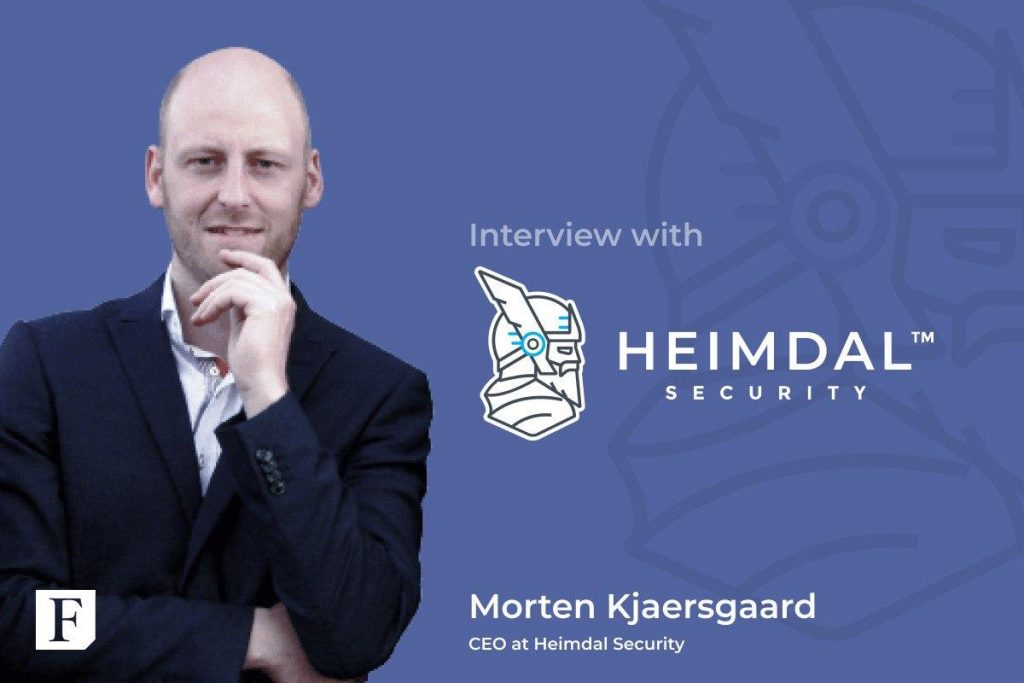HeimdalTM Security chief executive Morten Kjaersgaard has stated that cybercrime is already a profession. In an exclusive interview with Finbold.com, Kjaersgaard stated that tracking developments in the cybercrime sector will be a major trend in the coming year.
During the interview, the CEO pointed out the importance of having cybersecurity as part of the modern education curriculum. With cybersecurity undergoing rapid regulatory changes globally, Kjaersgaard explained how his firm has positioned itself to adapt to the changing environment.
Furthermore, Kjaersgaard gave insights on how the Coronavirus pandemic positively impacted the company. The officer further explained how the company was called up to help in simplifying the remote management of devices during the pandemic.
During the coronavirus pandemic, was there a change in Heimdal Security user behavior? For example, did you experience an increase or decrease in the number of users?
“The Coronavirus has meant a drastic change for all of us. Amazingly for Heimdal, the coronavirus pandemic had a positive impact, with an increased demand for software that simplified remote management of devices and could help increase security on WFH devices.
The change in consumption of our services also clearly documented the change the Coronavirus drove, as we saw a dramatic increase in the number of individual connections to our services.”
Cybersecurity is a very complex subject. How does HeimdalTM help businesses and individuals understand cybersecurity better and in return chose the best products suited for their needs?
“Understanding the customer and the customer’s needs and environment is the foundation of making any recommendations at all. The coronavirus pandemic really underlined the need for customer communication as there was a much faster shift for customers in thinking decentralized rather than centralized. What we delivered to them was tailored to meet those challenges.”
Financial institutions are more vulnerable to attacks. How does the HeimdalTM Thor for Banking, Insurance, and Union Customers ensure the safety of funds and data?
“Financial resources and Intellectual property are the cornerstone of any individual or company. I think the Garmin case from this past week, also really shows that – or the Chinese attacks to get COVID research extracted. We have targeted this vertical with a suite that helps customers prevent attackers from exfiltration of financial means or intellectual property by building a heavily layered security offering.”
HeimdalTM has existing cybersecurity education resources as a way of making people aware of their online security. In your view should cybersecurity be part of the mainstream education system?
“Absolutely, plain and simple. IT is part of the modern world and cyber attacks are part of that too. People need access to educational resources.”
Can you rate the current awareness of cybersecurity among businesses and individuals?
“I think everyone is aware that they need to do something about cybersecurity, but the problem is, what you should do. So, I think we can praise customers for their awareness and receptiveness to information, but combing through the information is the challenge.
We, as a cybersecurity business, need to relay the information to the user in a clear and concise manner.”
There is an increased interest in online security regulation across the globe. How does HeimdalTM position itself to adapt to any changes?
“We have a clear vision to be at the very front of changes in the market. I think the recent explosion in Brute-Force attacks is a great example of that, as we were one of the first in the market to launch the Brute-Force detection in our Firewall component – and this is just one of many examples over the past years.”
In your opinion, what are the top three key cybersecurity aspects to follow in order to remain safe online?
“This really differs from a consumer-to-business standpoint.
For Businesses, I think the most critical things you can do are:
- Restrict what users can do;
- Keep software up to date;
- Scan for incoming and executed files.
For Consumers:
- Don’t click anything you don’t trust;
- Keep software up to date;
- Run a decent AV and DNS filter.”
What cyber attack trends do you think are the most worrying currently?
“In my book, it is clearly the Brute-Force attack. It is so simple for the attackers to start, execute and complete – and the outcome is total technical control of the customer’s infrastructure.”
How will cybersecurity evolve in the next one year in your view?
“We try to look at it from the attacker’s point of view. What would I do if that was my business? Attackers are clearly trying to automate, optimize and increase their ROI.
They are trying to get an understanding of how their prey clicks, interacts and responds to messaging. Once we understand how that helps them evolve their business, we can preempt and implement the necessary technology barriers for our customers.
At the moment, we know that cybercrime is already professionalized, as we anticipated a few years ago it would be – now they are in the fine-tuning game, so we tracking what the developments are in that area.”









